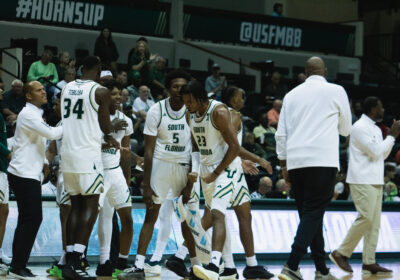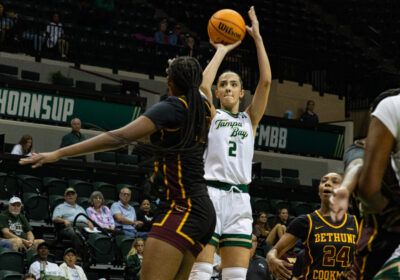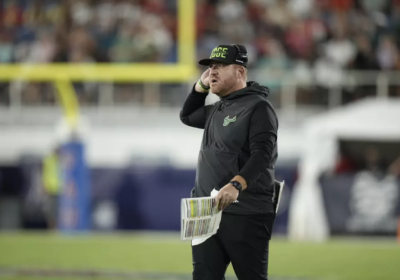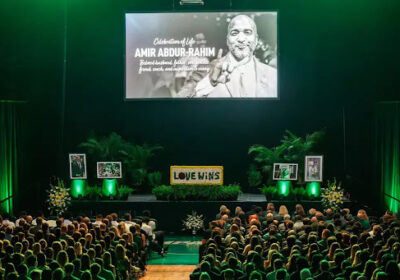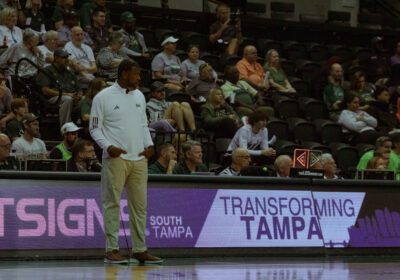NCAA greed creates gap in college football

The termination of UAB’s football program signals tough times ahead for non-power five schools such as USF. ORACLE FILE PHOTO/ADAM MATHIEU
The University of Alabama-Birmingham (UAB) announced Tuesday that it is terminating its football program — the first Division I school to do so in nearly 20 years.
With the overwhelming success of bigger schools and the greed of the NCAA, smaller schools like UAB, who can’t possibly keep up, fall by the wayside.
“As we look at the evolving landscape of NCAA football, we see expenses only continuing to increase,” UAB University President Ray L. Watts said in a statement released by the university. “When considering a model that best protects the financial future and prominence of the athletic department, football is simply not sustainable.”
UAB’s record of 6-6 this season made it bowl eligible for the first time since it played in the Hawaii Bowl in 2004, but if selected to play in a bowl game, the team may chose to decline the invitation due to the circumstances.
Players’ careers are in jeopardy and a program is in now in shambles while the Alabamas and Florida States of the country prosper more than ever before.
The rich continue to get richer as the middle class of the NCAA fall farther behind.
In August, the NCAA Board of Governors elected in a 16-2 vote to grant total autonomy to the top-five revenue producing conferences including the SEC, ACC, Big Ten, Big-12 and Pac-12.
This ruling essentially allows the 65 programs that fall within those conferences to govern themselves in several issues involving student athletes and competition.
Although the NCAA is making more money off the top programs in the country, it is making it nearly impossible for schools outside the power five conferences to compete.
Sports have always been about playing on a level field, but money is increasingly becoming a large part of the picture.
Within their ruling, the NCAA approved schools to give stipends to athletes to cover the entire cost of tuition, including travel and other living expenses not covered in the past.
But not all schools can afford to give their student athletes this luxury, which leads to athletes leaving the smaller schools for a power five school that can give them a little spending cash in addition to four years of free food and
schooling.
Bigger schools outside the power five are not exempt from the struggles of competing with the football giants.
Will a school like USF be able to keep its prime recruits in Tampa if UF, FSU and UM are throwing these extra benefits their way?
With the success coach Willie Taggart has had in terms of recruiting over the past two years, continuing to do so may become a daunting task at the very least.
Smaller schools will have to rely heavily on the hometown athletes and the scraps that are left from schools with much deeper pockets.
These new rules stemmed from two cases filed against the NCAA.
One, filed by former UCLA basketball player Ed O’Bannon, sought compensation from the NCAA for licensed merchandise and use of likeness of collegiate athletes.
The other suit was an attempt to form a players union filed by Northwestern quarterback Kain Colter.
In both cases, the NCAA lost, taking a step in the right direction, but still a long way from correcting the injustice that has gone on for decades.
These cases began to shine the light on the NCAA’s ability to use its athletes to funnel money in without giving any back to the players.
However, though the NCAA needs to spread the wealth with the royalties it receives, the balance of power shouldn’t be tipped further in the power five’s
direction.
If the playing field isn’t leveled again, if smaller universities don’t regain the ability to recruit players based on the quality of their program and not the depth of their wallets, then UAB might be the first in a trend of smaller schools folding under the weight of the new NCAA guidelines.

